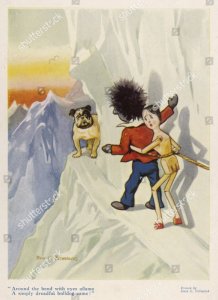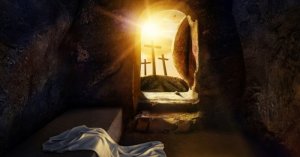You are using an out of date browser. It may not display this or other websites correctly.
You should upgrade or use an alternative browser.
You should upgrade or use an alternative browser.
Around The Bend
- Thread starter Meanderer
- Start date
Meanderer
Supreme Member
"Stephen Fry is and always was a sensational actor, however speaking German this well is truly amazing. Stephen Fry, Hugh Laurie, late Rik Mayal and The great Rowan Atkinson together in Blackadder goes forth were treasures to be hold for ever. British comedy at it’s BEST." ....around the bend!
(Rare!) Stalag Luft (1993) - Stephen Fry
(Rare!) Stalag Luft (1993) - Stephen Fry
Pappy
Living the Dream
Pappy
Living the Dream
Meanderer
Supreme Member
Nat King Cole - "The Best Friend a Song Ever Had"!
The Jack Benny Program - "The Nat King Cole Show"
From Season 14 (1963-1964), broadcast January 21, 1964: Nat King Cole opens the show singing "Day In, Day Out." He exchanges some ribbing with Jack and performs "When I Fall in Love." Jack invites a few musicians from the orchestra to join him in his office to rehearse "Sweet Sue," a number they're going to perform with Cole. A fight between the musicians leaves the drummer out of commission, so Nat promises to have his cousin fill in. On the show, the "cousin" is a five-year-old who can drum louder than Jack's violin solo.
James (JBJ) Bradley Jr.

James Bradley Jr demonstrates Chuck Mangione's Land Of Make Believe
The Jack Benny Program - "The Nat King Cole Show"
From Season 14 (1963-1964), broadcast January 21, 1964: Nat King Cole opens the show singing "Day In, Day Out." He exchanges some ribbing with Jack and performs "When I Fall in Love." Jack invites a few musicians from the orchestra to join him in his office to rehearse "Sweet Sue," a number they're going to perform with Cole. A fight between the musicians leaves the drummer out of commission, so Nat promises to have his cousin fill in. On the show, the "cousin" is a five-year-old who can drum louder than Jack's violin solo.
James (JBJ) Bradley Jr.

James Bradley Jr demonstrates Chuck Mangione's Land Of Make Believe
Last edited:
RadishRose
SF VIP
- Location
- Connecticut, USA
Every driver should watch this early "road rage" piece. Oh, I still love cartoons. Imagine this great animation was done by hand?Meet Mr. Walker & Mr. Wheeler.....around the bend!
Goofy Motor Mania
Thanks, @Meanderer!
peppermint
Senior Member
- Location
- East Coast Yes
I know Fort dix, NJ....Been there many times...To pick up my Dad when traveling from camp to camp...Mostly Camp Drum, NY... He lived aI might have gone fishing...... Nancy, I am not a fisherman, but did tag along for some fly fishing, while at Fort Dix NJ. I found it boring.
couple of miles East....
RadishRose
SF VIP
- Location
- Connecticut, USA
LOL, "is there a parrot in here?"....."Stephen Fry is and always was a sensational actor, however speaking German this well is truly amazing. Stephen Fry, Hugh Laurie, late Rik Mayal and The great Rowan Atkinson together in Blackadder goes forth were treasures to be hold for ever. British comedy at it’s BEST." ....around the bend!
(Rare!) Stalag Luft (1993) - Stephen Fry
"Ja"!
Meanderer
Supreme Member
Pappy
Living the Dream
Meanderer
Supreme Member
THE BELLED COYOTE by Robert Fletcher (1885-1972)

Robert Fletcher (1885 - 1972) was an engineer, writer, and poet. Born in Iowa, Bob moved to Montana when he was 23 to work as a surveyor. Some years later, he went to work for the Montana Highway Commission, producing all of the state’s tourism promotional material and, ultimately, creating more than 100 highway markers (many of which still stand today), along with picnic areas, visitors’ centers, maps, and roadside museums. The author of a cowboy poetry collection called Corral Dust, Bob also wrote a nonfiction book called Free Grass to Fences, about the Montana cattle industry.

Robert Fletcher (1885 - 1972) was an engineer, writer, and poet. Born in Iowa, Bob moved to Montana when he was 23 to work as a surveyor. Some years later, he went to work for the Montana Highway Commission, producing all of the state’s tourism promotional material and, ultimately, creating more than 100 highway markers (many of which still stand today), along with picnic areas, visitors’ centers, maps, and roadside museums. The author of a cowboy poetry collection called Corral Dust, Bob also wrote a nonfiction book called Free Grass to Fences, about the Montana cattle industry.












